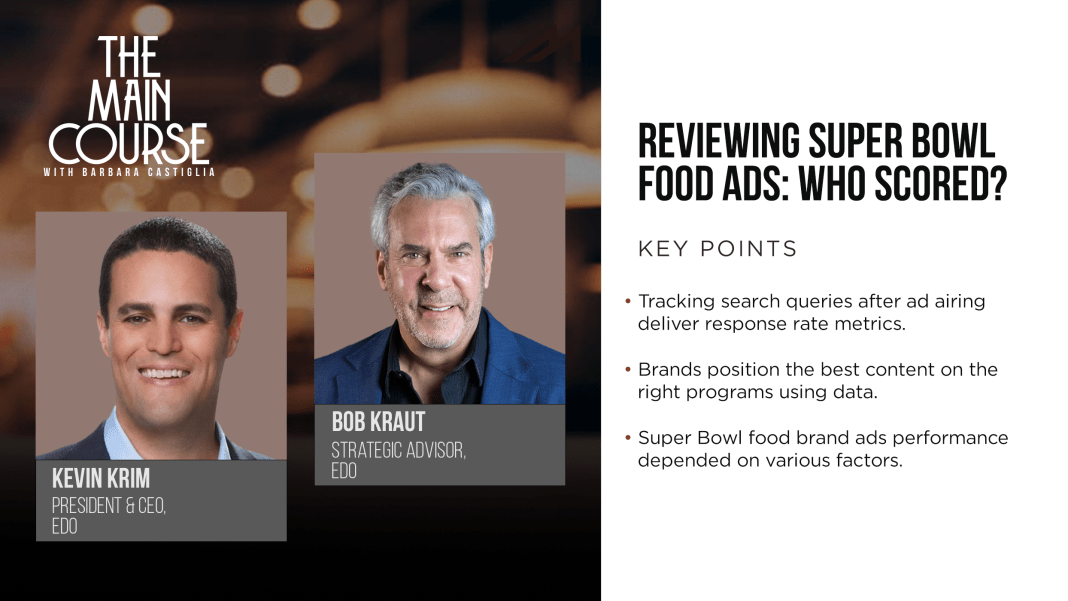How Did Brands Score in Super Bowl Advertising? (Podcast)
By MRM Staff
In this episode of The Main Course host Modern Restaurant Management (MRM) Executive Editor Barbara Castiglia talks about how restaurant-related brands are using national televison advertising to engage with customers. Listen to a replay on how food ads did during the Super Bowl with Bob Kraut and Kevin Krim of EDO, which works with advertisers, agencies, and TV networks to drive better value for media investments.
On the company’s origins, Krim said, “The idea was a realization that consumers are interacting with TV ads in the same way as digital ones; it was just harder to know the response.”
The secret to EDO’s data-driven insights is that they monitor advertising and what happens on search engines immediately following them to develop a response rate. This data then helps brands understand which creative and programs deliver the best ROI.
Krim, the company’s CEO, and Kraut, a strategic advisor, and former CMO at Papa Johns, talked about how the big game’s food brand ads performed.
Krim shared some insights on Super Bowl ads. “The competitiveness of the game does impact engagement. A competitive one gets better results. It’s the best single event on TV for engagement. So much so, a company would have to buy 140 primetime spots to get the same results.”
There six food brands with ads—Door Dash, Uber Eats, Jimmy Johns, Chipotle, Pizza Hut, and McDonald’s. The winner? Door Dash.
Krim explained its success. “It was early in the first quarter so good placement. It had the elements that matter. It was relevant, creative, and authentic.”
Uber Eats had less success, ranking at the bottom. The creative was a little off and didn’t resonate. official pizza of the NFL, the ad didn’t feature any content relating to football.”
The full assessment of Super Bowl LV ads is available on the EDO website.
To listen, click here.
A new episode of The Main Course, our podcast series with MarketScale, is served up every Tuesday and Thursday.

